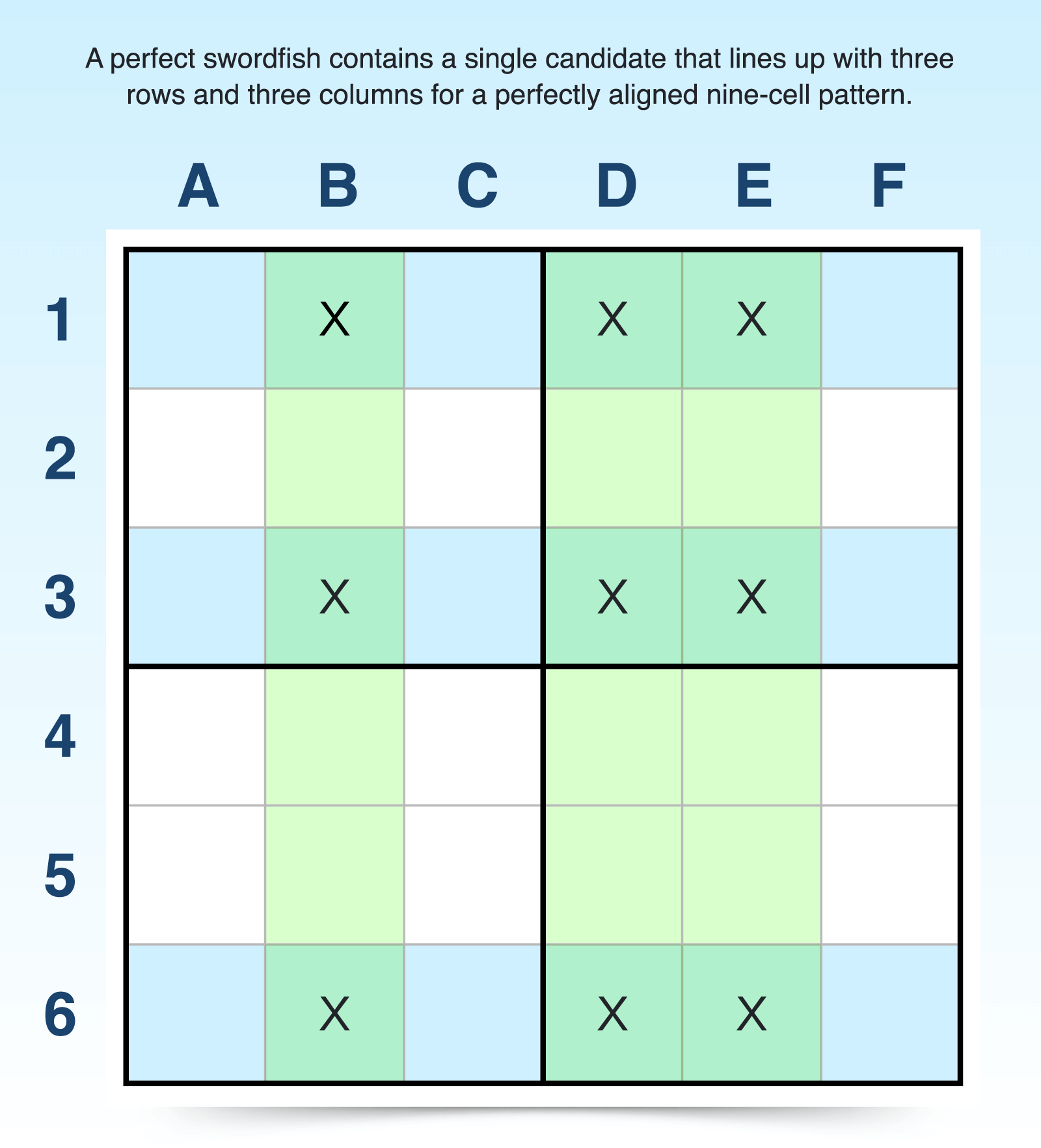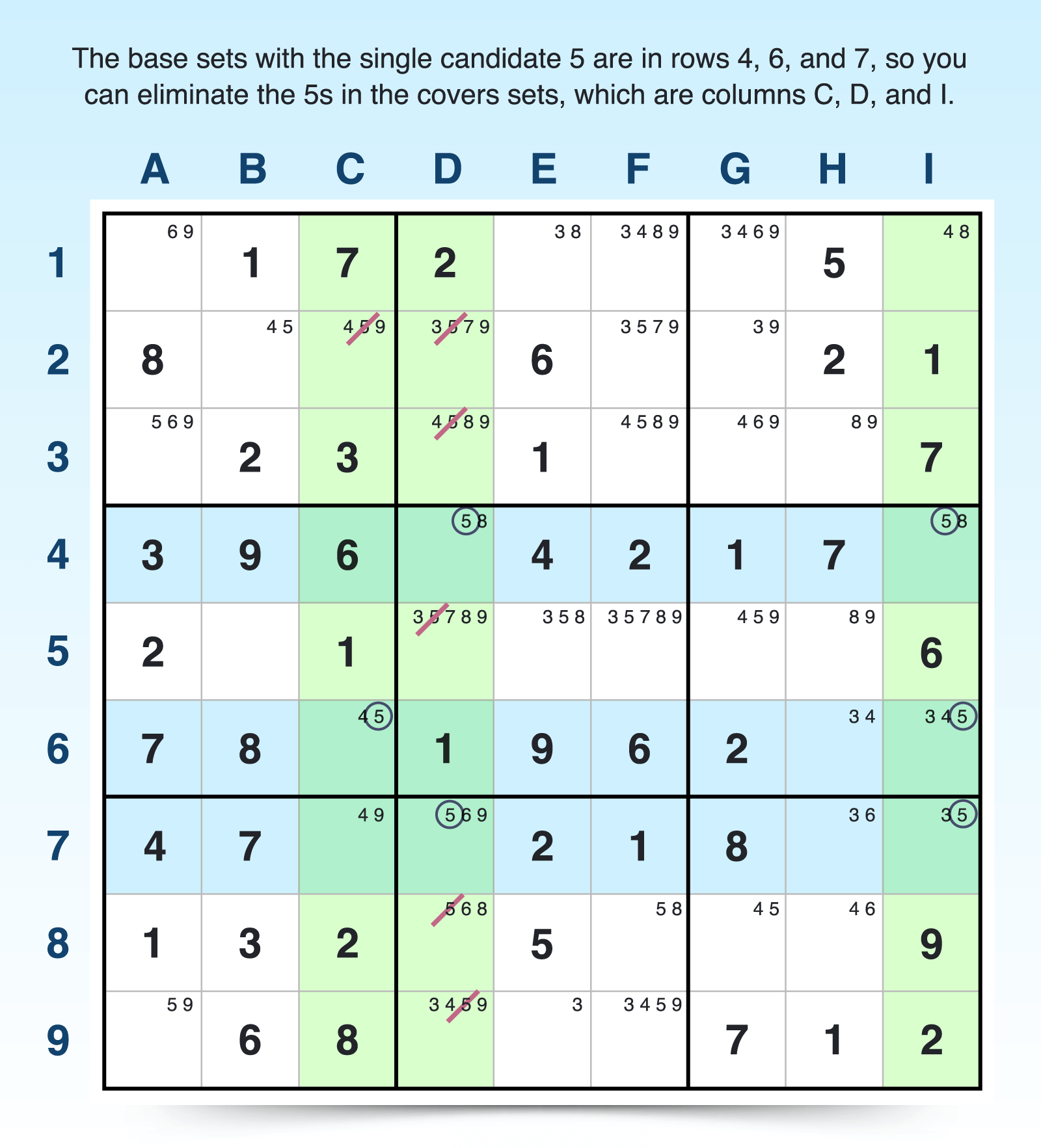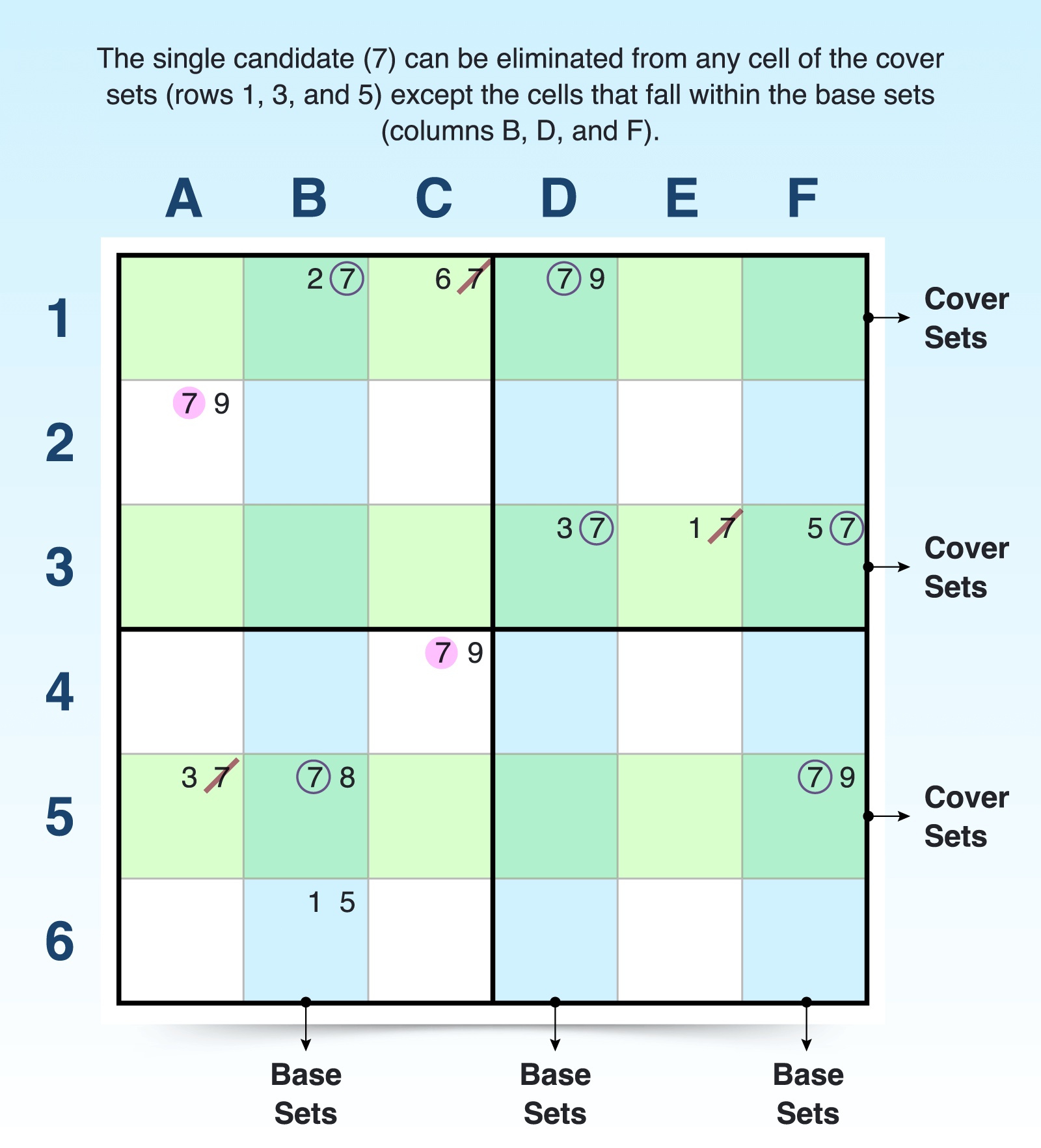Swordfish Sudoku Technique: Use Cases and Examples
If you can find naked pairs, hidden triples and X-wings, take your Sudoku skills to the next level with the swordfish strategy. This advanced technique is best suited for players who need Sudoku strategies to solve challenging puzzles.
With the Sudoku swordfish strategy, you are simply expanding an X-wing to create a pattern of up to nine cells spread across three rows and three columns. You can use this pattern for eliminations, helping you find answers to cells and narrow down possible candidates in other cells.
Once you can identify and use the swordfish pattern, you'll solve more puzzles more efficiently when you play Sudoku online.
How to Find a Swordfish
The swordfish solving technique is a Sudoku strategy that extends the X-wing pattern to another set of rows and columns. To find the pattern, focus on one candidate that appears in only two or three cells across each of three rows (or columns). The two or three cells should also align with only three of the opposite unit.
So if a single candidate appears in two or three cells in each of three rows, and those cells all fall within the same three columns, you've found a potential swordfish pattern. If that single candidate extends to four rows that line up with four columns, you may have even found a jellyfish pattern.
A swordfish pattern in its perfect form, which is quite rare, has the same single candidate appearing in three rows and three columns that all line up for a tidy three-by-three, nine-cell pattern.

Although the swordfish is an extension of the X-wing, identifying one is a bit more like spotting hidden triples. This is because the pattern only requires that the single candidate appears in two or three of the cells in each of the three rows or columns.
To identify a swordfish, look for these criteria:
- A single candidate appears in exactly three rows or exactly three columns. For example, 5 appears in three different rows (4, 6, and 7).
- In each of those rows (or columns), the candidate is limited to just two or three cells that all lie in the same three columns. The three rows are called base sets. In this example, candidate 5 appears in two cells in each row (D4, I4, C6, I6, D7, and I7) and three aligned columns (C, D, and I).
- If you find a swordfish, then you can eliminate that single candidate from the cover sets. Cover sets are the opposite unit in which the base sets are found, in this case columns C, D, and I. You can eliminate candidate 5 from those columns, with the exception of the base set cells.

Just like the X-wing, a swordfish pattern can be orientated in two ways: horizontally (rows) or vertically (columns). Orientation refers to how the candidate lines up--by columns vertically or rows horizontally--and the orientation determines where you can eliminate candidates. In a horizontal swordfish (lined up by rows), you eliminate the target candidate from columns, and in a vertical swordfish (lined up by columns), you eliminate the target candidate from rows.
Swordfish Sudoku Examples
To get the most out of the swordfish strategy, start by using pencil marks to note all possible candidates in each cell. Then look for swordfish patterns and use them to eliminate candidates from the cover sets.
The following examples will show you how to spot swordfish patterns in challenging Sudoku puzzles.
Swordfish Pattern with Horizontal Orientation
A swordfish pattern with horizontal orientation is a swordfish with the single candidate limited in three rows. If you've marked all the candidates in a puzzle, you can look for rows in which just two or three of one single candidate appears.
A technique for advanced solvers, swordfish has two simple steps to identify it and eliminate candidates:
- Identify a single candidate that appears only two or three times in three rows and in no more than three columns. For example, candidate 4 appears just two or three times in rows 2, 4, and 6 and aligns with just three columns: B, D, and E. The rows are the base sets for the swordfish pattern.
- Eliminate the candidate identified in the base sets (rows) from the cover sets (columns). Since 4 must occupy one of the marked cells in each row, it cannot appear anywhere else in columns B, D, or E. So you can eliminate 4 from any other cell in those columns (B1, D5, and E3) outside the swordfish pattern.

Swordfish Pattern with Vertical Orientation
A swordfish can also have vertical orientation and is just as easy to spot. Follow the same steps as you would with horizontal orientation, but look at columns for base sets instead of rows:
- Identify a single candidate that appears only two or three times in three columns and no more than three rows. For example, candidate 7 appears just two or three times in columns B, D, and F and lines up with only in three rows: 1, 3, and 5. These columns are the base sets for the swordfish pattern.
- Eliminate the candidate identified in the base sets (columns) from the cover sets (rows). Since 7 must occupy one of the marked cells in each column, it cannot appear anywhere else in rows 1, 3, or 5. So you can eliminate 7 from any other cell in those rows (A5, C1, and E3) outside the swordfish pattern.

Using new strategies can help you conquer more challenging, difficult Sudoku puzzles. So use this swordfish technique for hard or expert puzzles and eliminate more candidates so you can solve Sudoku puzzles faster.